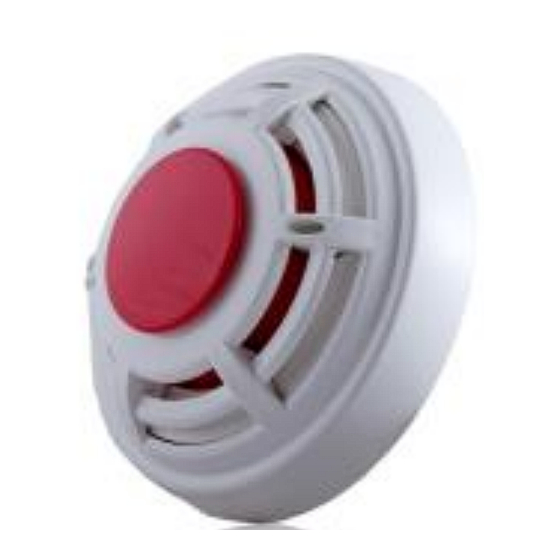
Advertisement
Table of Contents
ISO 9001:2008 Certified Company
1. INTRODUCTION
S9000 is applicable for sound and flash LED indication of events registered in Fire Alarm Systems. S9000 is
compliant with EN54-3. The sounder is connected a two-wire cable on a base B9000. After being mounted on its
base, the sounder must be locked.
2.
TECHNICAL DATA
–
Power supply:
–
Alarm state current:
–
Sound level, type "Slow whoop" on 1m:
–
Frequency, pattern "Slow whoop":
–
Flash light signalling:
–
Connection to fire detector:
–
Degree of protecion:
–
Operational temperature range:
–
Relative humidity resistance:
–
Dimensions:
–
Weight:
3. MOUNTING THE SOUNDER
–
Choose the place (according to the plans of the project) for the installation of the sounder ;
–
Mount the base with appropriate fixings ;
–
Connect the electrical cables according to the attached diagram ( Figure 1) ;
When connected to a controllable output of Fire Panel
Instruction manual
CONVENTIONAL SOUNDER
S9000
Теl:
e-mail
web
Address :16 Nikolay Haytov Str.
5800 Pleven, Bulgaria
9-30 V DC
max.60 mА/24V DC
94dB /
24V DC
0.5 – 1,2 kHz
red
two-wire line
IP 40
minus 15ºС to 70ºС
(93 ± 3)% at 40ºС
ф100mm / h≤52mm
Ø
0.100g
+359 64 801 597
:office@dm-teh.com
: www.dm-teh.com
Advertisement
Table of Contents

Summary of Contents for DMtex S9000
- Page 1 S9000 1. INTRODUCTION S9000 is applicable for sound and flash LED indication of events registered in Fire Alarm Systems. S9000 is compliant with EN54-3. The sounder is connected a two-wire cable on a base B9000. After being mounted on its base, the sounder must be locked.
- Page 2 Instruction manual S9000 Fig.1 – Place the detector base and rotate clockwise till matching markers; – Lock of the of the sounder: Pre remove the key from the base ( Figure 2). Break the plastic at the specified location on the bottom of the sounder ( Figure 3 Fig.2...
Need help?
Do you have a question about the S9000 and is the answer not in the manual?
Questions and answers